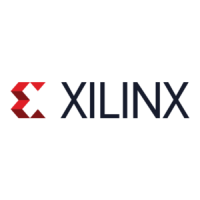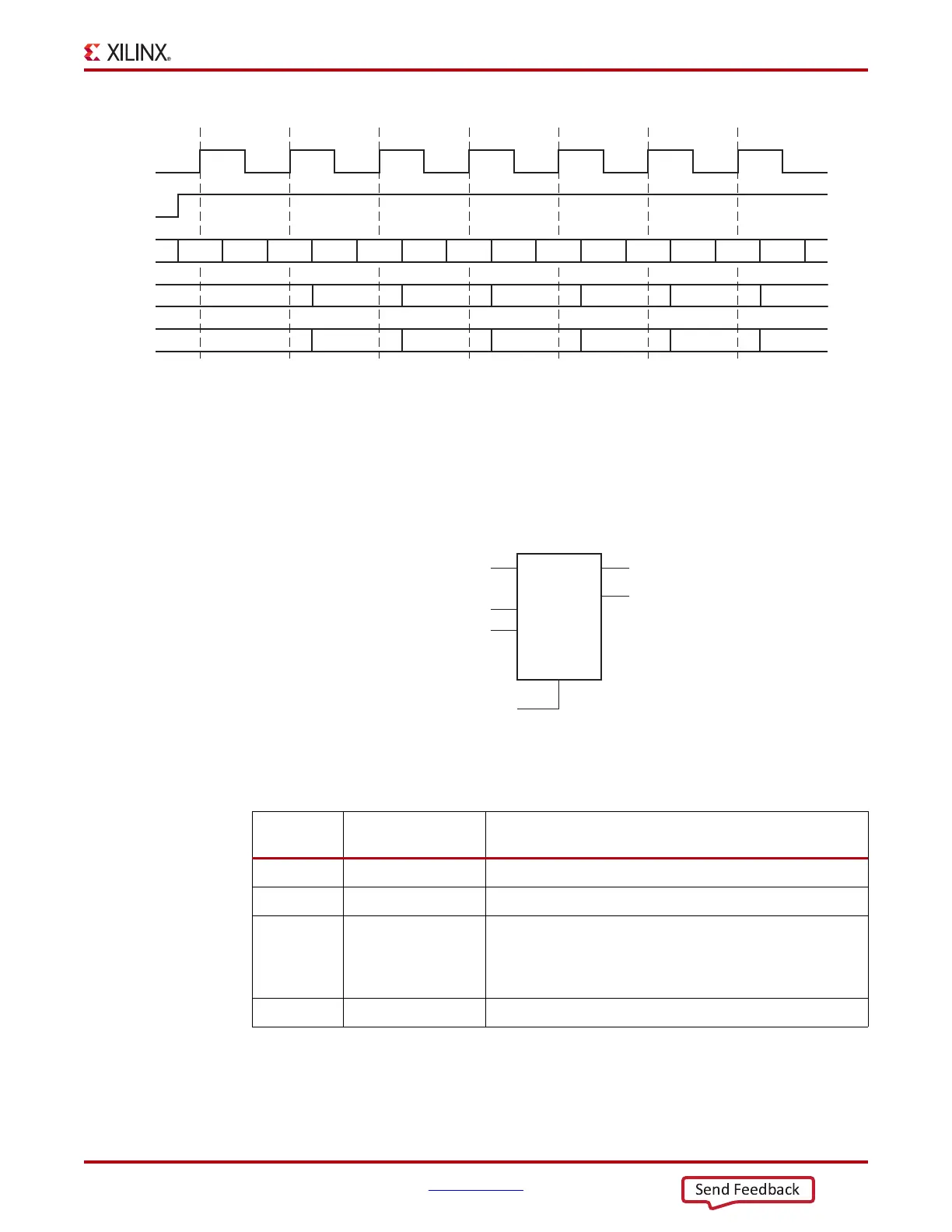7 Series FPGAs SelectIO Resources User Guide www.xilinx.com 111
UG471 (v1.10) May 8, 2018
ILOGIC Resources
Input DDR Resources (IDDR)
Figure 2-8 shows the block diagram of the IDDR primitive. Set and Reset are not supported
at the same time. Table 2-1 lists the IDDR port signals. Table 2-2 describes the various
attributes available and default values for the IDDR primitive.
X-Ref Target - Figure 2-7
Figure 2-7: Input DDR Timing in SAME_EDGE_PIPELINED Mode
ug471_c2_05_090810
C
CE
D
Q1
Q2
D0A D1A D2A
D0A D2A D4A D6A D8A D10A
D1A D3A D5A D7A D9A D11A
D3A
D4A D5A D6A D7A D8A D9A D10A D11A D12A D13A
X-Ref Target - Figure 2-8
Figure 2-8: IDDR Primitive Block Diagram
Table 2-1: IDDR Port Signals
Port
Name
Function Description
Q1 and Q2 Data outputs IDDR register outputs.
C Clock input port The C pin represents the clock input pin.
CE Clock enable port The enable pin affects the loading of data into the DDR
flip-flop. When Low, clock transitions are ignored and
new data is not loaded into the DDR flip-flop. CE must be
High to load new data into the DDR flip-flop.
D Data input (DDR) IDDR register input from IOB.
ug471_c2_06_061215
C
CE
D
S/R
Q1
Q2
IDDR

